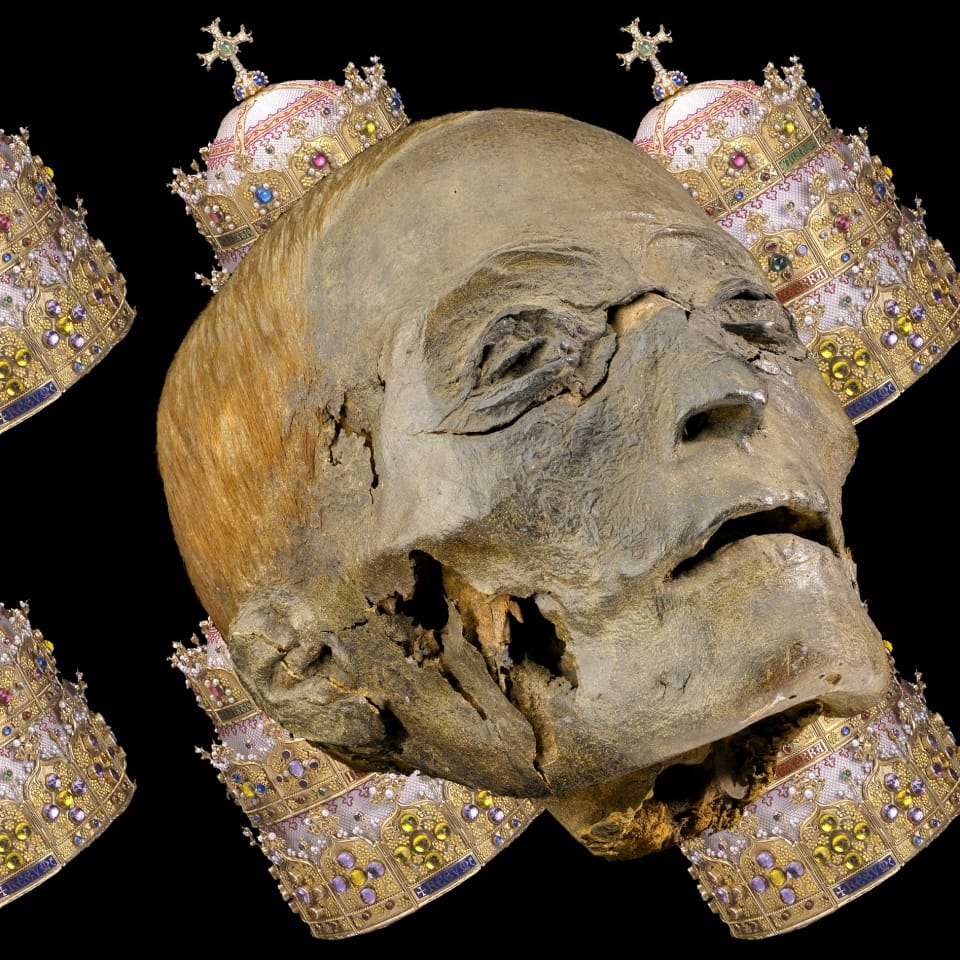What’s the best way to tell area residents about plans for a new asylum shelter nearby?
The government should tell communities directly about plans for new asylum shelters, some activists and politicians say.
Split into four vignettes, the play “The Assassination of Pope Urban II” tackles religion, death, decay, and disability.

James Moran calls his new experimental comedy “a one-and-a-half-man comedy show”.
The Assassination of Pope Urban II is no strict, historical drama, he says. “Most of it is about this extremely fictional version of Pope Urban II.”
The play premiered Tuesday at Smock Alley Theatre as part of the Dublin Fringe Festival. Split into four vignettes, it tackles religion, death, decay, and disability.
Moran seems unsure of what his show aims to do exactly. Elements are pulled from the ether, he said on Friday morning, sat outside Project Arts Centre.

A lapsed Catholic, Moran says he has long had an interest in the imagery of suffering and decay peppered throughout the Bible.
That’s why his re-imagining of Pope Urban II, who initiated the First Crusade in 1095, is that of “a runt” who has lived his life with a crippling wasting disease.
Absurd as it may sound – think more Garth Marenghi’s Darkplace than Goethe – the show’s themes are closer to home for Moran than most.
“It’s not like I sit around all day thinking about disability,” says the 27-year-old, sipping from a mug of coffee. “But when you have a disability it does subconsciously influence how you see the world.”
Moran has Stickler syndrome, a rare hereditary disorder that affects facial features and joints. “I’ve been very worried about my health … all my writing was turning into themes of death and decay,” says Moran, of his recent work.
As Pope Urban II, born underdeveloped, decays throughout the play, then lives in a graveyard, Moran explores themes close to his own experience. “It’s about my relationship with being sick,” he says.
Without giving much away, The Assassination of Pope Urban II sees Moran on stage, reading from “the diaries” of the 11th-century pontiff, scripts Moran has prepared to guide the audience through the play’s four sections.
It’s a format he has followed in other shows, too. “What normally happens at a show is that for the first 10 minutes everyone hates it,” he says. “Then they realise it’s a joke. But you need that 10 minutes because they need to get in on the joke.”
So throughout the play he reads script after script as narrator, a self-confessed “pompous act. The relationship with the audience is that this is supposed to be a real work of art,” he says, half-joking, half-serious.
Having performed since 2011, he has gradually moved his brand of comedy away from the stand-up stage to the theatre.
In the play’s first section, Moran narrates, Hitchcock-style, guiding the audience through a hospital where Pope Urban has just been born.
From there it’s on to Coolock, where the brains of several Celtic Tiger-era millionaires, sat in jars, debate the benefits of living forever as organs while recreating plot lines from Downton Abbey with the aid of several robotic snakes.
It’s a reflection, says Moran, on chasing immortality while sacrificing quality of life. Brains alone can do little, he laughs.
This section, like the third – in which a graveyard-dwelling Pope Urban II hears the voices of the dead around him – was heavily influenced by Máirtín Ó Cadhain’s 1949 novel Cré Na Cille ( or Graveyard Clay), in which the voices of the recently deceased bring gossip and news of local occurrences to those long dead.
The show, running from Wednesday to Saturday this week, offers what Moran feels is a different approach to exploring sickness and disability on stage, one that brings a bit more humour, character, and imagination.
“This is about exploring the emotions around sickness and disability without just saying ‘Ah, I’m sick,’” he says.
The character of Pope Urban II, emblematic of Christianity’s expansion, works for Moran as an icon thrust into imaginary suffering, he says. He is in turn played by the “half-man”, another actor, who closes the fourth and final vignette.
Cards to chest, think papal sports gear, pulpits, and stand-up routines. Despite the show’s hefty themes, in its absurdity The Assassination “is primarily a comedy”, says Moran.